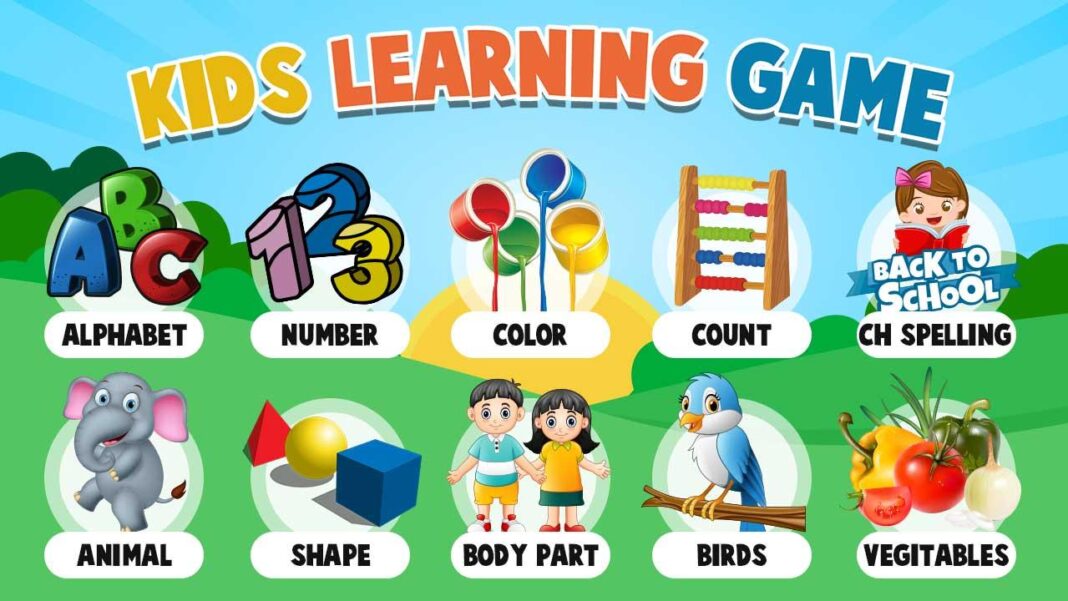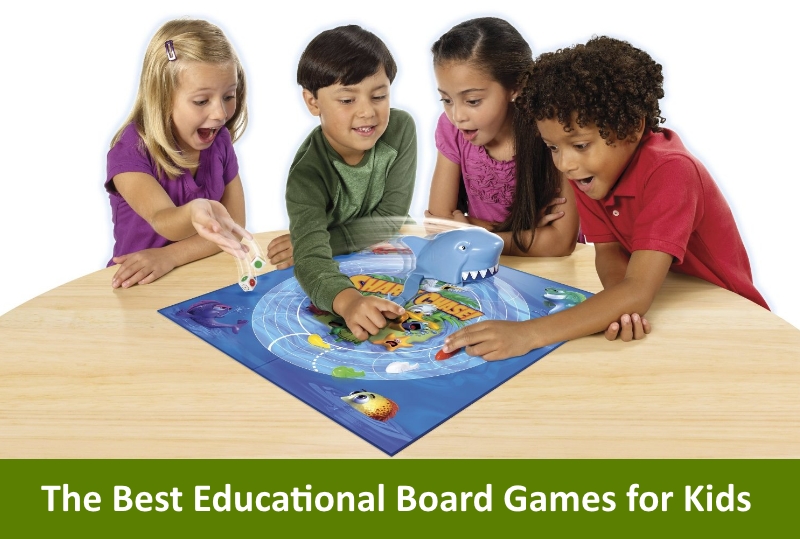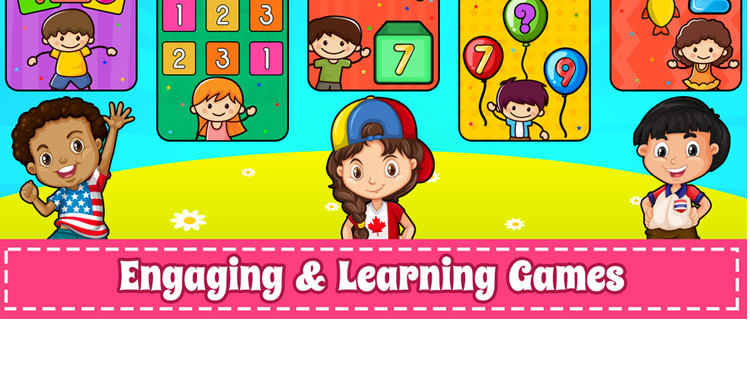

The Power of Play: Exploring Popular Educational Games for Children
In today’s fast-paced world, where screens are ubiquitous and traditional learning methods are constantly being re-evaluated, the concept of “educational games” has moved from a niche category to a cornerstone of modern childhood development. No longer just a simple diversion, games specifically designed with learning in mind offer a powerful, engaging, and often highly effective way for children to acquire knowledge and develop essential skills. They harness a child’s natural inclination towards play, turning learning from a chore into an adventure.
This article delves into the world of popular educational games, exploring why they are so effective, examining examples across different platforms and age groups, and offering guidance on how parents and educators can choose and integrate them into a child’s learning journey.
Why Educational Games Matter: The Power of Playful Learning
At its core, learning should be an exciting process of discovery. However, traditional methods can sometimes feel repetitive or abstract, making it difficult for children to stay motivated. This is where educational games shine. They leverage several key psychological principles that make learning more effective and enjoyable:
-
- Engagement and Motivation: Games are inherently fun. They present challenges, offer rewards, and provide a sense of accomplishment. This intrinsic motivation encourages children to spend more time on a task, practice skills repeatedly, and persevere through difficulties – all crucial elements for deep learning.
- Active Learning: Unlike passive consumption of information (like watching a video or listening to a lecture), games require active participation. Children are making decisions, solving problems, and interacting with the content, leading to better retention and understanding.
- Skill Development Beyond Academics: Educational games aren’t just about memorizing facts. They often foster critical thinking, problem-solving, spatial reasoning, strategic planning, fine motor skills (especially with physical games or touch screens), and even social skills (in multiplayer games).

- Making Abstract Concepts Concrete: Difficult or abstract subjects like math equations, scientific principles, or coding logic can be intimidating. Games often use visual metaphors, interactive simulations, and tangible mechanics to make these concepts easier to grasp and manipulate.
- Personalized Learning Paths: Many digital educational games adapt to a child’s pace and performance, offering challenges that are just right – not too easy to be boring, and not too hard to be frustrating. This personalized approach keeps children in the optimal zone for learning.
- Reducing Anxiety: Learning in a low-stakes, playful environment can reduce anxiety associated with making mistakes. Games encourage experimentation and view errors as opportunities to learn and try again.
In essence, educational games transform the learning experience from a potential obligation into a desired activity, fostering a lifelong love for exploration and knowledge.

A World of Options: Exploring Different Types of Educational Games
The landscape of educational games is vast and varied, spanning both digital and physical realms. Understanding the different types can help in selecting the best fit for a child’s needs and preferences.
-
- Digital Games and Apps: These are perhaps the most visible in the current market. Available on smartphones, tablets, computers, and consoles, they offer rich, interactive experiences. They can range from comprehensive curriculum-based platforms to specific skill-building exercises (like math drills or language learning).
- Online Educational Platforms: Websites offering a variety of games, activities, and lessons, often structured around specific subjects or grade levels.

- Educational Board Games and Card Games: These classic forms of play are far from obsolete. They are excellent for developing strategic thinking, social skills, math skills (counting, probability, money), literacy, and patience. They also provide valuable family interaction time.
- Building Toys and Puzzles: While not always labeled “games,” toys like LEGO, Magna-Tiles, and various puzzles are profoundly educational, fostering spatial reasoning, problem-solving, creativity, and fine motor skills.
Popular Digital Educational Games and Apps
Let’s look at some examples that have gained significant popularity among parents, educators, and children:
- For Early Learners (Preschool – Kindergarten):
- ABCmouse.com: A comprehensive, subscription-based platform covering reading, math, science, art, and music for children aged 2-8. It uses animations, games, books, and activities in a structured “Step-by-Step Learning Path.” Its popularity stems from its breadth of content and engaging presentation.
- Khan Academy Kids: A fantastic, free app for children aged 2-6. It offers thousands of educational activities, books, and games covering math, reading, writing, social-emotional development, and problem-solving. Its high-quality content and accessibility make it a top choice.
- Starfall: Known for its focus on phonics and reading, Starfall offers interactive activities that make learning letters, sounds, and basic reading fun. It’s particularly popular for its clear, sequential approach to literacy.
- For Elementary Schoolers:
- Prodigy Math Game: This popular free fantasy-based game turns math practice into an adventure. Children battle monsters by answering math questions tailored to their grade level. It’s widely used in schools and homes because it makes practicing math facts and concepts genuinely engaging.
- Osmo: While digital, Osmo uniquely blends physical manipulation with digital interaction. Using a base and reflective mirror, children interact with physical pieces (like letters, numbers, or shapes) to play games on a tablet screen. It covers subjects like coding, math, spelling, drawing, and more, appealing to kinesthetic learners.
- Minecraft: Education Edition: Based on the globally popular sandbox game, the Education Edition provides a collaborative and creative environment for learning across subjects. Teachers use it for lessons on history (building ancient civilizations), science (simulating ecosystems), math (calculating resources), and coding. Its open-ended nature allows for immense creativity and problem-solving.
- Code.org / Tynker: These platforms introduce children to the fundamentals of computer programming through block-based coding interfaces and fun challenges. Code.org’s Hour of Code events are globally popular, while Tynker offers more structured courses and game creation tools. They demystify coding and build computational thinking skills.
- For Middle Schoolers (and Upper Elementary):
- Duolingo: While popular with all ages, Duolingo’s gamified approach to language learning (earning points, leveling up, competing with friends) makes it highly effective for older children and teens wanting to learn a new language.
- Quizlet: More of a study tool than a traditional game, Quizlet allows users to create or use flashcards, study sets, and play games like “Match” or “Gravity” to memorize vocabulary, facts, and concepts across any subject. Its user-generated content makes it versatile.
Popular Physical and Board Educational Games
Moving away from screens, traditional games offer unique benefits, particularly for social interaction and tactile learning.
- Building Blocks (LEGO, Magna-Tiles, etc.): These are timeless educational toys. They teach spatial reasoning, geometry, problem-solving, creativity, fine motor skills, and engineering concepts as children design and build structures.
- Puzzles: Jigsaw puzzles of varying complexity improve spatial awareness, problem-solving skills, patience, and fine motor coordination. Thematic puzzles (like maps or the human body) add specific subject knowledge.
- Scrabble / Bananagrams: Excellent for vocabulary, spelling, and strategic thinking. Bananagrams is often faster-paced and less intimidating for younger players.
- Educational Board Games:
- Ticket to Ride: While primarily a strategy game, it teaches geography as players collect train car cards to claim railway routes connecting cities on a map.
- Catan: Junior: A simplified version of the popular strategy game Settlers of Catan, it introduces resource management, trading, and strategic planning in an accessible way.
- Robot Turtles: Designed for very young children (4+), this board game teaches the basic concepts of programming logic (sequencing commands, debugging) without needing a computer.
- Money Management Games: Games like Monopoly (simplified versions) or specialized games focused on finance can introduce concepts of earning, spending, saving, and investing.
Selecting the Perfect Fit: Tips for Choosing Games
With so many options, how do you choose the right educational game?
- Consider the Child’s Age and Development: Games should be age-appropriate in terms of complexity, content, and user interface. Look for recommendations from educators or reputable review sites.
- Identify Learning Goals: What specific skills or subjects do you want to reinforce? Choose games that directly target those areas (e.g., a math game for math practice, a coding game for logic).
- Match the Child’s Interests: A game about dinosaurs will be more engaging for a child fascinated by paleontology. If they love fantasy, a game like Prodigy might be a hit.
- Look for Quality Content: Ensure the educational content is accurate, well-designed, and aligns with sound pedagogical principles. Read reviews and try demos if possible.
- Balance Screen Time: If choosing digital games, be mindful of overall screen time. Balance it with physical play, reading, and other activities.
- Check for Adaptability: Does the game adjust difficulty? Can it grow with the child? Games with multiple levels or expanding content offer longer-term value.
- Consider Social Interaction: Board games and some digital games offer opportunities for collaborative or competitive play, adding a social dimension to learning.
Making the Most of Game-Based Learning
Simply providing a game isn’t always enough. To maximize the educational impact:
- Play Together: Especially with younger children or board games, playing alongside them allows you to model strategies, discuss concepts, and share the fun.
- Discuss the Learning: Talk about what they learned from the game. “Why did that block make the tower fall?” “What strategy worked best in that level?” “How did you figure out that math problem?”





